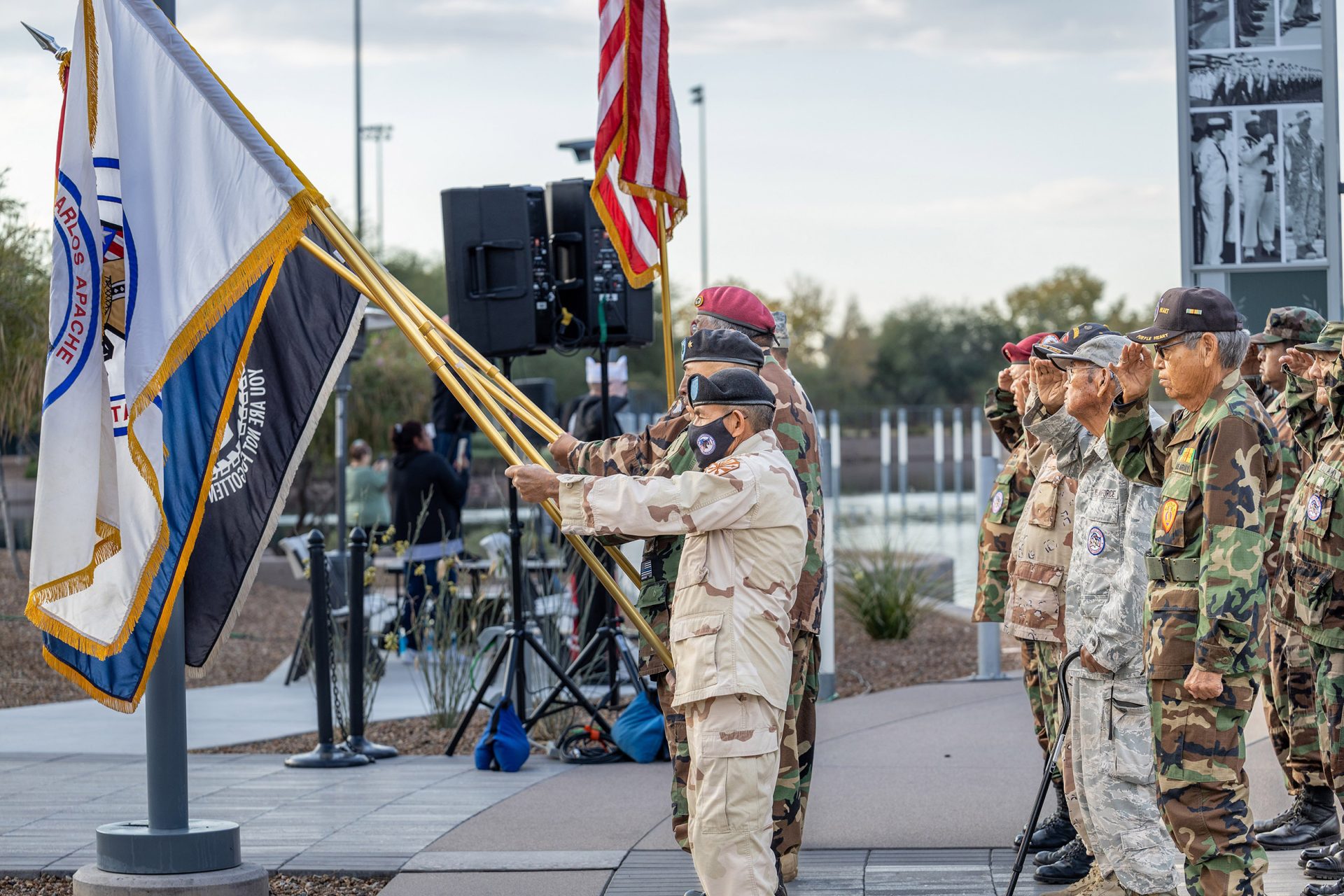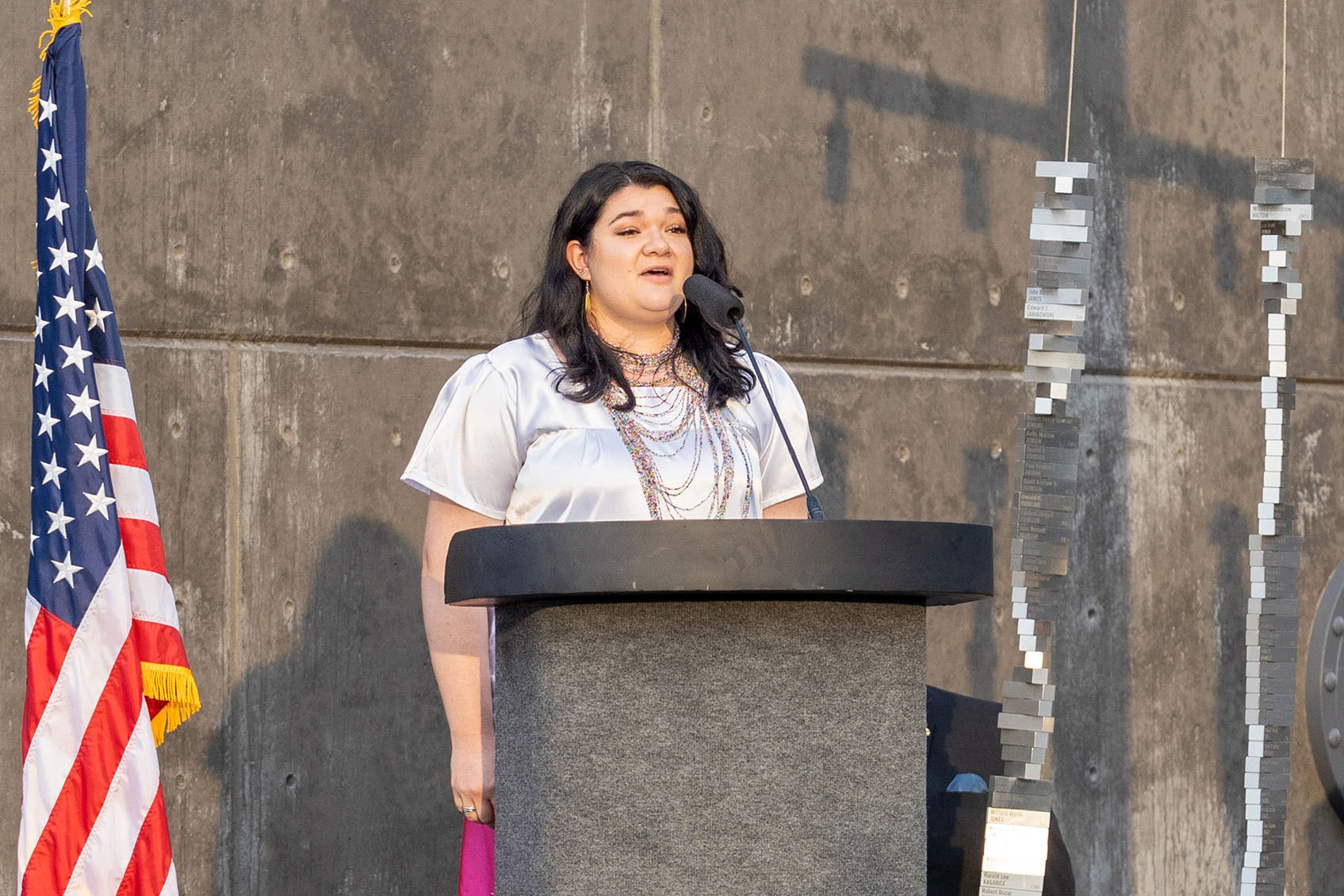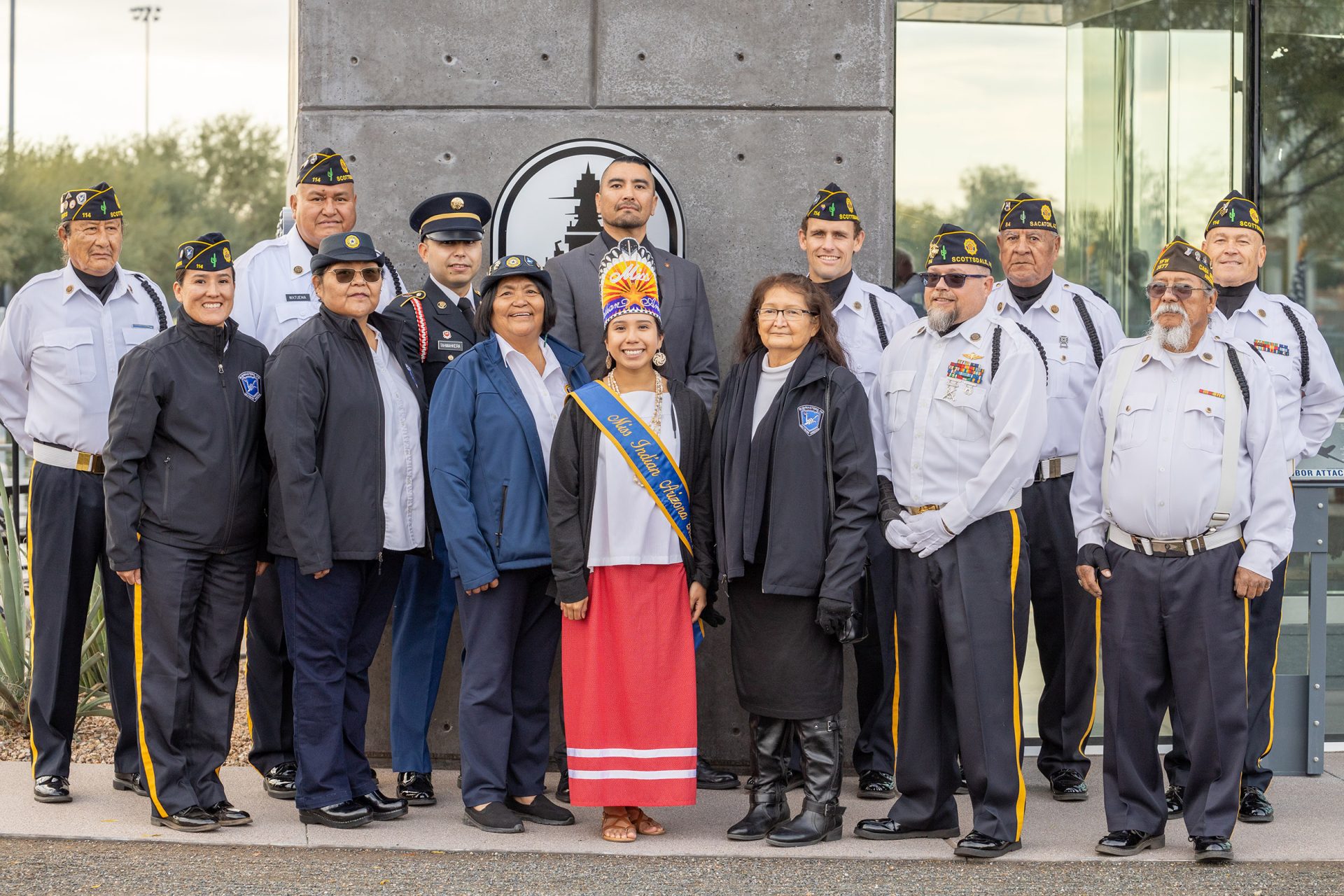Eighty-one years ago, the United States entered World War II following the attack on U.S. forces at Pearl Harbor, Hawaii, on December 7, 1941. Decades later, on December 7, 2022, the Salt River Pima-Maricopa Indian Community remembered the lives of those lost during the Pearl Harbor attack at the U.S.S. Arizona Memorial Gardens at Salt River.




“On the 81st anniversary of remembrance, we look back on the attacks on Pearl Harbor on December 7, 1941,” said Troy Truax Jr., veterans representative for the SRPMIC Veterans Services Office. “[That] morning, 353 Imperial Japanese aircraft launched from four aircraft carriers attacked the base. As a result, 169 U.S. aircraft were destroyed and eight Navy battleships in port were damaged.”
The total number of U.S. personnel killed in the attack was 2,403, including 68 civilians, while another 1,178 were wounded. Of the eight U.S. Navy battleships attacked at Pearl Harbor, the U.S.S. Arizona was one of four that were sunk, losing a majority of her crew in the ensuing torpedo attacks.
Citing the significance of the event, Truax said, “It is in honor of those that pass and remembrance of the events of that day that we conduct this annual ceremony. This includes the ringing of a bell to receive the official party ‘on-board,’ as is customary on naval vessels to welcome individuals of significance.”
The naval customs were performed by retired U.S. Navy veteran Alvin Velez and U.S. Marine Corps veteran Kevin Riding-In. Following the ringing of the bell, a special moment of silence was held to remember the fallen service members with a ship’s whistle.
Afterward, SRPMIC President Martin Harvier gave the blessing, which was followed by the Pledge of Allegiance, led by current Miss Indian Arizona Sistine Lewis, and the national anthem, sung by former Miss Salt River Isabella Dockerty.
“I want to thank everybody for being here … I appreciate all of you,” said President Harvier. “When we think back on that day, a lot of people were lost, and today we remember them for their sacrifice. [These] are the reasons that we come together. We can never forget those things that happened so long ago.”
Harvier said that although the attacks on Pearl Harbor were sudden, the country’s leadership and military quickly pulled together to respond. He said although the nation was resolute in its response to the acts of war by Japan, the country’s own citizens of Japanese descent became the target of the government’s forced relocation plan. “Many of them were sent to relocation camps on tribal lands, such as the Gila River Internment Camp,” he said.
Harvier added that we also must think of these individuals, who also paid a price for their ethnicity at a time when the country was swirling with all kinds of emotions. “[These] are some of the things that have actually happened here in the U.S. because of the attack on Pearl Harbor … we need to think about the lives that were affected because of that.”
To close out the ceremony, members of American Legion Post 114 “The Bushmasters” and the women’s auxiliary post lowered the American flag, which was moved in the four cardinal directions to honor all veterans. Truax said, “The breathing of the flag ceremony traces its origins to 2007 and the first Pearl Harbor Remembrance event after receiving the flag from the Survivors of Pearl Harbor.”
At the end of the ceremony, at the ends of the lake at the U.S.S. Arizona Memorial Gardens, a 21-gun salute took place and Post 114 member David Bonczkiewicz played Taps. From a bird’s-eye view, the memorial is designed to resemble the outline of the U.S.S. Arizona.














